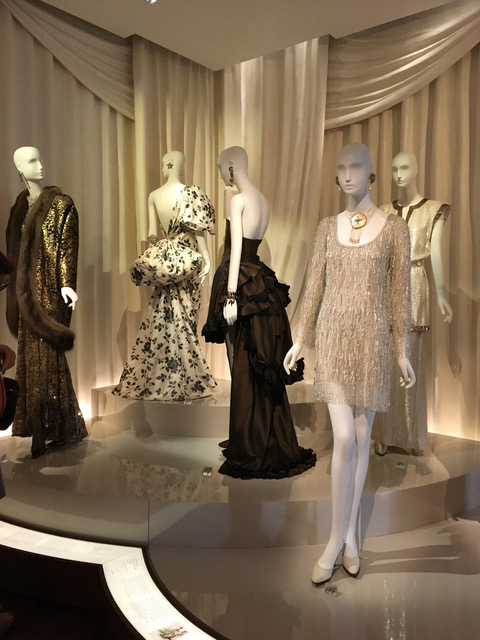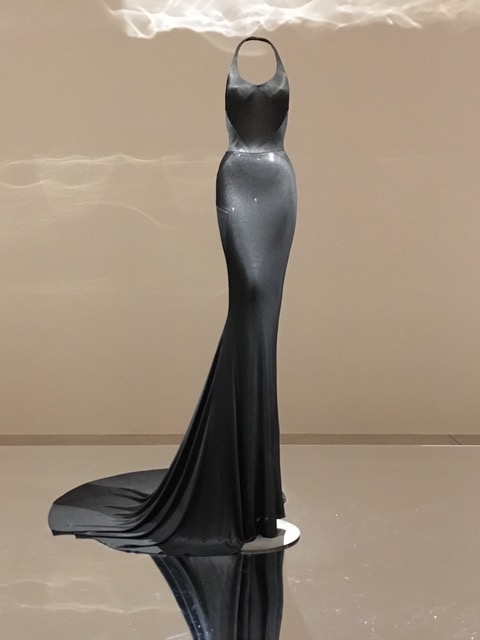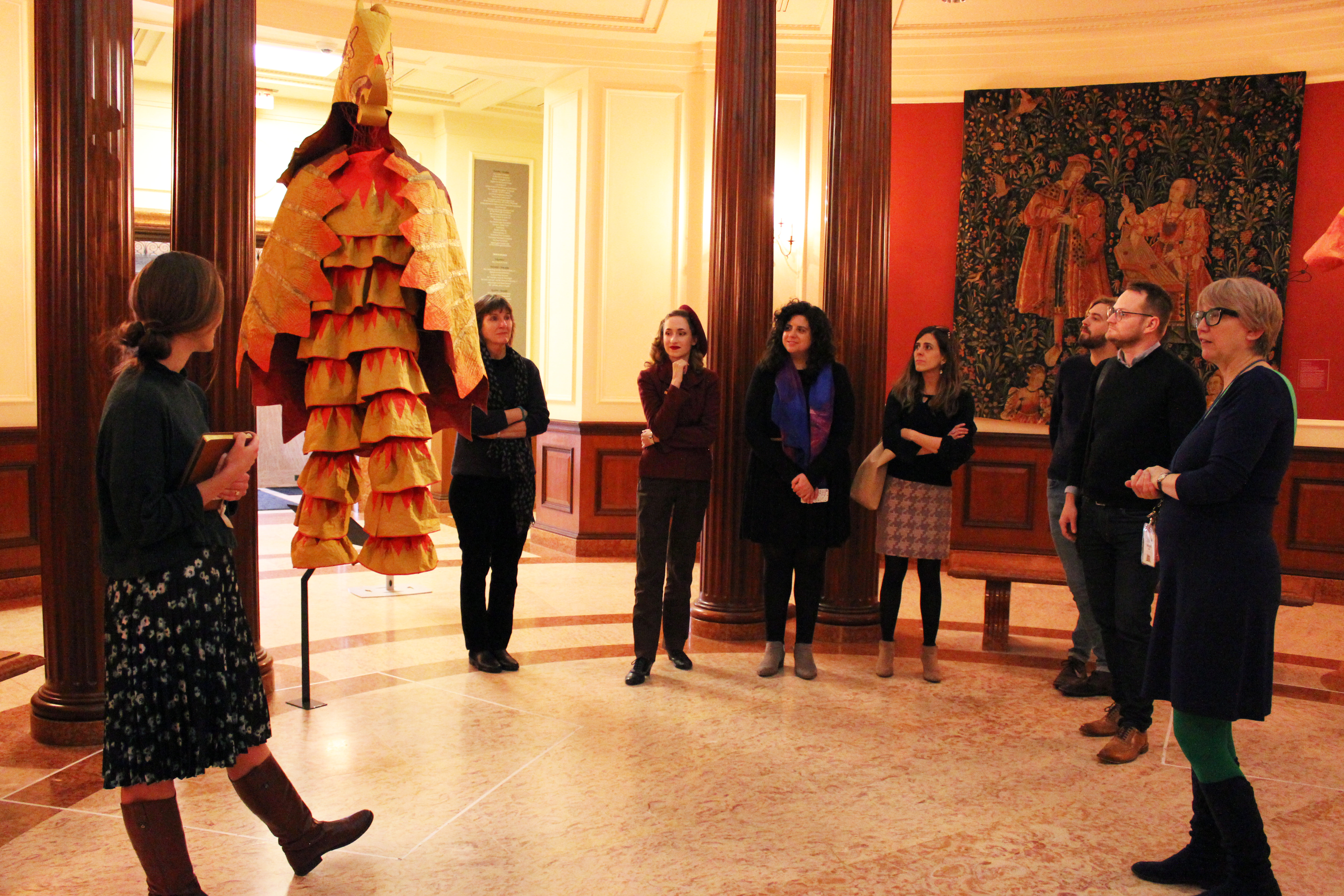Author: Emily Mazzola
PhD Student in History of Art and Architecture and 2018-2019 Mellon Fellow in Curation and Education
I arrived three years ago at Pitt, just as excitement over fashion exhibitions began to take hold here with the opening of Killer Heels at The Frick Pittsburgh. Due to my interests in gender, identity, and museum display practices, I was encouraged to research and write about the clothing exhibitions happening across Pittsburgh. I quickly discovered, however, how unprepared I was to take up this research. I needed to read, see, and experience more. So I created a grant proposal and travel itinerary that took me to some of the largest fashion collections and fashion exhibiting institutions in Western Europe. Four weeks, ten cities, and thirty-five museums—I spent the month of July fully immersed in fashion displays and clothing history. Exploring how museums across London, Paris, and Amsterdam tell stories using clothing, create spaces for audiences to imagine new bodily experiences, and position fashion in relation to the history of art.
But, as is often the case when we leave home in search of something new, I discovered upon returning to Pittsburgh, something fashionable and novel just beyond my own front door—The Frick Pittsburgh’s latest exhibition Isabelle de Borchgrave: Fashioning Art from Paper (open through January 6, 2019). Fashioning Art from Paper is an exhibition of meticulously crafted paper gowns spanning the history of art and dress. Reveling in the materiality of its objects and witty trompe l’oeil that transforms paper pulp into silk, velvet, and pearls—Fashioning Art from Paper offers a compelling meditation on the ways fashion exhibitions continue to connect with museum audiences.
Chief Curator Sarah Hall’s display strategies facilitate object movement, an approach that replicates the ways fashion and dress history exhibitions empower viewers to imagine engaging with garments beyond their bodily experience. But in Fashioning Art from Paper the garments are not clothes, and the spaces opened up by the exhibition for viewers to image new tactile experiences give way to questions and desires about creativity rather than consumption. Upon entering the exhibition viewers are greeted with the costumes of the Ballet Russes gently twirling in the air. Paper tutus mounted from the ceiling dance with the audience when they move around the rotunda in a captivating call and response. Paper, however, does not flutter the way tulle does, and the interest usually sparked by garment movement in fashion exhibitions to wear, feel, and possess the clothing gives way to new curiosities regarding the transformation of paper, tape, and glue into dazzling garments. In fact, Hall revealed during a private exhibition visit, that one of the primary audience responses was not the urge to touch or wear the garments, but a desire create paper fashions of their own.
The seeming accessibility of de Borchgrave’s process and materials is amplified by the ways Fashioning Art from Paper plays with fashion curation’s emphasis on craftsmanship and handwork, replacing academic appreciation of technical skill with wit and clever visual illusions. Fashion exhibitions, especially haute couture shows, highlight the skills required to uphold the traditions of the Chambre Syndicale de la Haute Couture. Fashioning Art from Paper’s embrace of trompe l’oeil turns this element of fashion display on its head. It is not the intricate embroidery or beadwork that draws the viewer in, but de Borchgrave’s mimicry of it. Tongue and cheek details reveal the artifice of the paper garments. For example, in de Borchgrave’s Medici Series, the trappings of Renaissance wealth, such as gold pendants and chains, are rendered as single pieces of cut paper. By refusing to model the heft and weight of Florentine gold, the artist lets the viewer in on the joke, revealing her sleight of hand.
Fashion exhibitions continue to draw museum audiences in part because they create spaces for engaging with objects that are once relatable and familiar yet sensorially foreign, providing opportunities to imagine bodily experiences beyond the realm of our everyday experiences. But in Isabelle de Borchgrave: Fashioning Art from Paper the viewer is not asked to imagine the tactile sensations of Baroque silk, but rather how paper can be painted, torn, and embellished to emulate it.
Learn more about the Collecting Knowledge Pittsburgh initiative here




